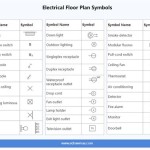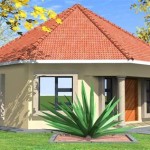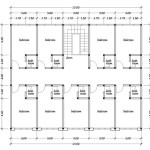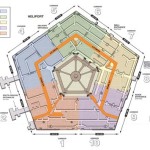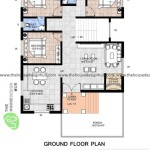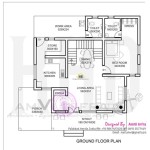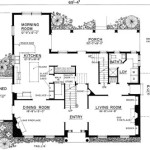Plantation Style House Plans in Hawaii: A Guide to Design and Construction
The architectural landscape of Hawaii is a rich tapestry woven with influences from various cultures and historical periods. Among the most distinctive styles is the Plantation style, a design ethos that reflects the islands' agricultural past and the practical needs of its inhabitants. Understanding the nuances of Plantation style house plans is crucial for those looking to build or renovate homes in Hawaii, ensuring that new constructions blend seamlessly with the existing architectural heritage while meeting contemporary living standards.
Plantation style architecture, originating in the late 19th and early 20th centuries, was initially developed for managers and owners of sugar and pineapple plantations. These homes were designed to provide comfortable living in a tropical climate, prioritizing functionality and incorporating features that mitigated the harsh Hawaiian sun and prevalent rainfall. Over time, the Plantation style evolved, incorporating elements from Victorian, Craftsman, and even Asian architectural traditions, resulting in a unique aesthetic that is both practical and visually appealing.
Modern adaptations of Plantation style homes continue to be popular in Hawaii, driven by a desire to preserve the islands’ architectural character and create homes that are well-suited to the local environment. Architects and builders often incorporate traditional elements while integrating modern technologies and materials to enhance energy efficiency and sustainability. Careful consideration of site orientation, ventilation, and material selection are paramount to creating Plantation style homes that are both beautiful and functional.
Key Characteristics of Plantation Style House Plans
Several key characteristics define the Plantation style, distinguishing it from other architectural designs. These features are not merely aesthetic choices but are deeply rooted in the practical requirements of living in a tropical environment. Understanding these characteristics is essential for accurately identifying and replicating the Plantation style.
One of the most recognizable features is the expansive, covered lanai (veranda). This outdoor living space is typically wrapped around the perimeter of the house, providing shade and allowing residents to enjoy the island breezes. The lanai serves as an extension of the interior living space, often used for dining, relaxing, and entertaining. Plantation style house plans frequently feature multiple access points from the interior to the lanai, blurring the lines between indoor and outdoor living.
Another defining feature is the use of hipped roofs with wide overhangs. These roofs provide crucial protection from the intense Hawaiian sun and heavy rainfall. The wide overhangs cast shadows on the walls and windows, reducing heat gain and keeping the interior cooler. The hipped roof design also offers greater stability in high winds, a common occurrence in Hawaii.
The incorporation of louvered windows and doors is also a hallmark of Plantation style architecture. Louvers allow for natural ventilation, facilitating airflow throughout the house and reducing the need for air conditioning. Adjustable louvers provide control over the amount of light and breeze entering the interior, allowing residents to adapt to changing weather conditions. The use of jalousie windows is particularly prevalent in older Plantation style homes, adding to their distinctive character.
Finally, the use of natural materials is a defining characteristic. Wood, particularly redwood and cedar, is commonly used for siding, trim, and structural elements. These woods are naturally resistant to decay and insects, making them well-suited to the tropical climate. Stone is also used for foundations, walkways, and landscaping, adding to the natural and rustic aesthetic. The preference for natural materials contributes to the overall harmony of the house with its surrounding environment.
Considerations for Modern Plantation Style Construction
While adhering to traditional Plantation style elements, modern construction must also address contemporary needs and building codes. Careful planning and design are necessary to ensure that new Plantation style homes are both aesthetically pleasing and structurally sound, energy-efficient, and environmentally responsible.
One critical consideration is energy efficiency. While the traditional Plantation style already prioritizes natural ventilation and shading, modern technologies can further enhance energy performance. The use of high-performance windows and insulation can significantly reduce heat gain and energy consumption. Solar panels can provide a renewable energy source, reducing reliance on fossil fuels. Incorporating energy-efficient appliances and lighting fixtures can also contribute to a more sustainable home.
Another important factor is compliance with local building codes and regulations. Hawaii has strict building codes designed to protect against hurricanes, earthquakes, and other natural hazards. Plantation style house plans must be engineered to withstand these forces, ensuring the safety and durability of the structure. Obtaining necessary permits and inspections is crucial for ensuring compliance and avoiding potential legal issues.
Accessibility is also a growing consideration in modern Plantation style construction. Incorporating universal design principles can make homes more accessible to people of all ages and abilities. Features such as wider doorways, ramps, and grab bars can enhance accessibility without compromising the aesthetic integrity of the Plantation style. Designing for accessibility ensures that homes can be enjoyed by occupants throughout their lives.
Sustainable building practices are also becoming increasingly important. Utilizing recycled materials, minimizing waste during construction, and preserving existing vegetation can reduce the environmental impact of building a Plantation style home. Choosing locally sourced materials can also support the local economy and reduce transportation costs. Sustainable building practices contribute to a more environmentally responsible and resilient community.
Adapting Plantation Style Plans to Specific Hawaiian Environments
Hawaii is a diverse archipelago with distinct climates and landscapes on each island. Adapting Plantation style house plans to specific environments is crucial for creating homes that are both comfortable and well-integrated into their surroundings. Factors such as rainfall, wind patterns, and sun exposure must be carefully considered.
In wetter environments, such as the windward sides of the islands, it is essential to prioritize drainage and moisture control. Steep roof pitches and wide overhangs can effectively shed rainwater, preventing water damage to the walls and foundation. Utilizing water-resistant materials, such as redwood and cedar, can also help to protect against moisture. Proper site grading and landscaping can ensure that water flows away from the house, preventing flooding and erosion.
In drier environments, such as the leeward sides of the islands, it is important to focus on shading and ventilation to mitigate the effects of the intense sun. Planting trees and shrubs can provide shade and reduce heat gain. Orienting the house to take advantage of prevailing breezes can enhance natural ventilation. Incorporating light-colored roofing materials can reflect sunlight and reduce heat absorption.
In coastal environments, it is crucial to protect against salt air and wind. Salt air can corrode metal and damage wood, requiring the use of corrosion-resistant materials and protective coatings. Designing for high winds can prevent damage to the roof and structure. Elevating the house on piers or stilts can protect against flooding and storm surge.
Regardless of the specific environment, it is essential to work with experienced architects and builders who are familiar with local conditions and building practices. They can provide valuable insights and guidance on adapting Plantation style house plans to specific site conditions, ensuring that the home is both beautiful and durable.
Ultimately, successful implementation of Plantation style house plans in Hawaii requires a deep understanding of the style's history, its key characteristics, and the specific environmental conditions of the islands. By carefully considering these factors, homeowners can create homes that are both aesthetically pleasing and functionally appropriate, preserving the architectural heritage of Hawaii while meeting the needs of modern living.

Plantation Style Architecture Kaua I Kui Ula

Pin On Home Plans


Popular Hawaiian Home Styles And Pre Design Options Luva Real Estate

Pin On Hawaiian Hale

The Visionary Space Hawaiian Plantation Style Homes

Oahu Hawaii Real Estate Blog Kailua And Homes For

Lehua Plantation Longhouse Design Build

Architecture In Hawaii Part 1 The Plantation Home Real Estate Market Trends Life

78 Hawaiian Houses Ideas House Homes Hawaii

